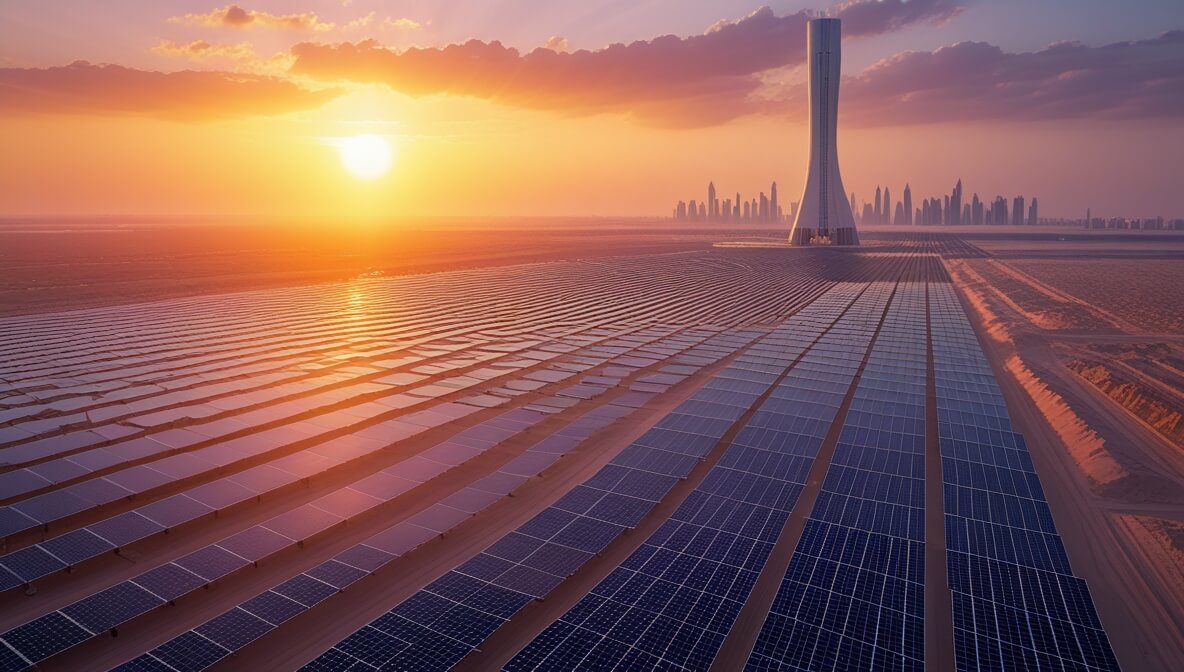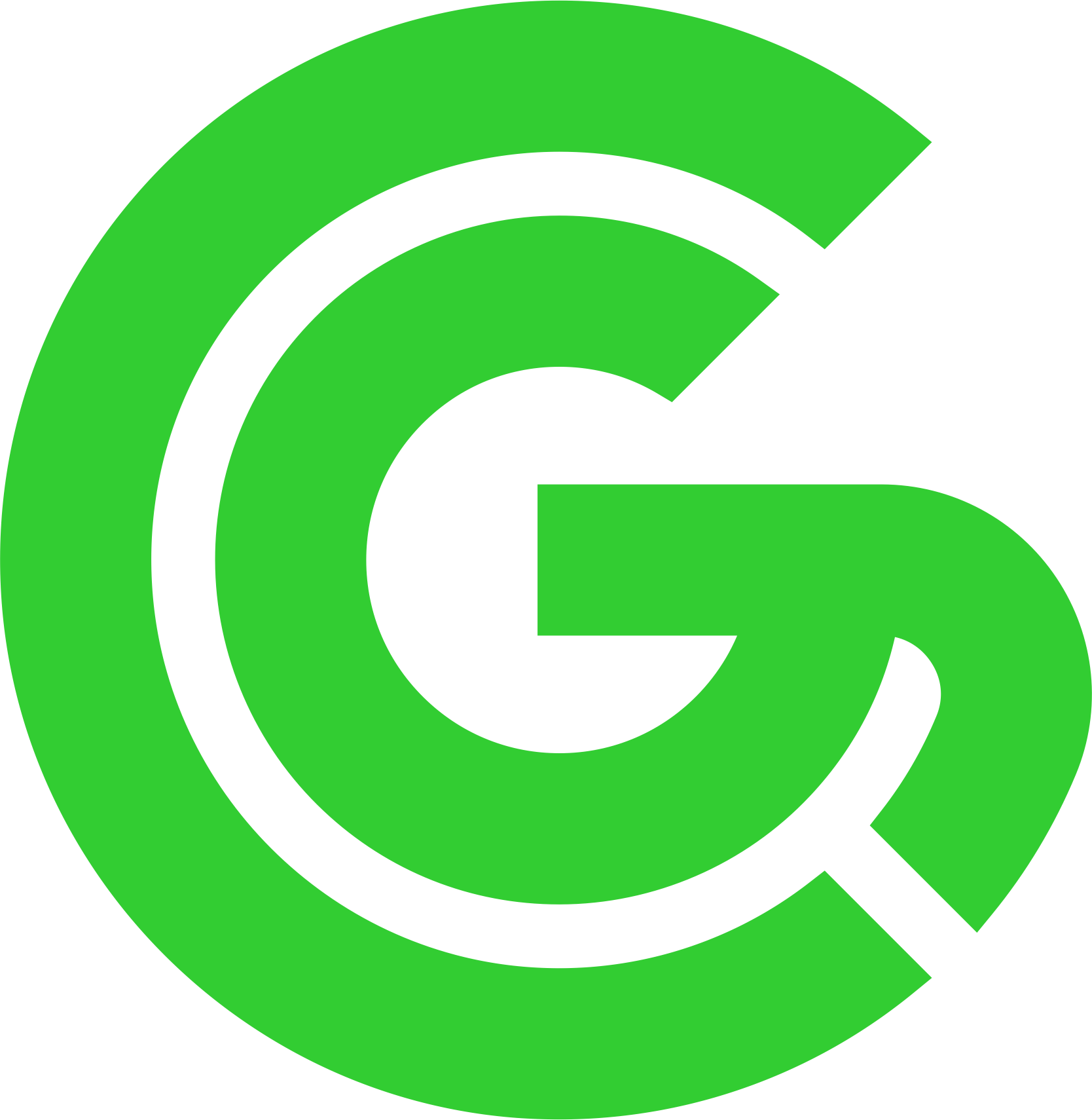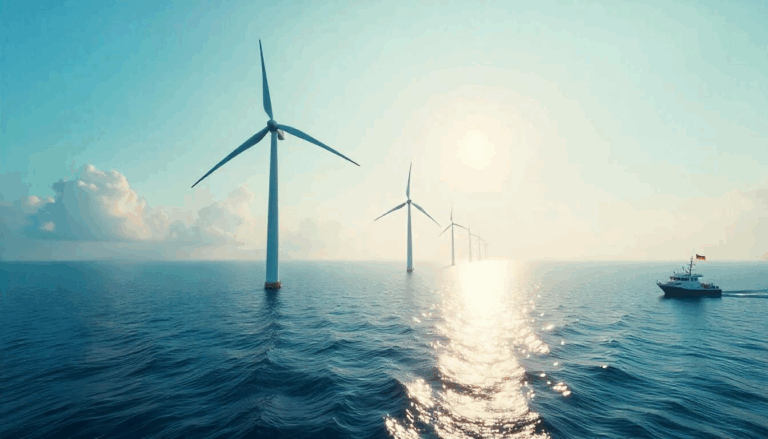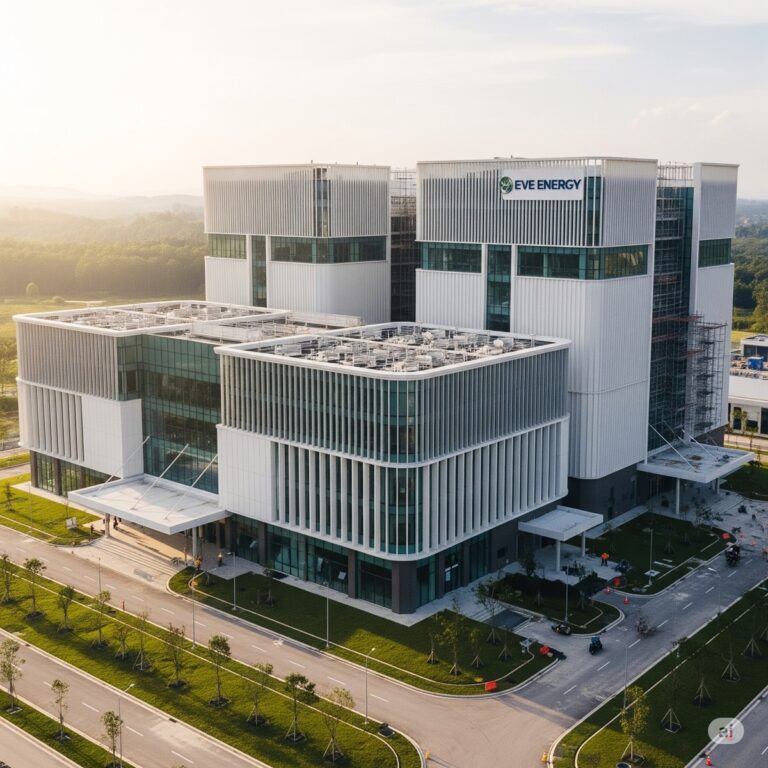Dubai’s Solar Powerhouse: How the MBR Solar Park Reached 3.9 GW and What’s Next

The desert sun, once seen primarily as a source of relentless heat, has been reimagined in Dubai as a powerhouse of clean energy. The Mohammed bin Rashid Al Maktoum (MBR) Solar Park, a monumental undertaking by the Dubai Electricity and Water Authority (DEWA), stands as a beacon of this transformation. As of June 2025, this sprawling solar complex has achieved an astounding installed capacity of 3,860 megawatts (MW), or approximately 3.9 gigawatts (GW), solidifying its position as one of the world’s largest single-site solar parks.
This isn’t just an engineering marvel; it’s a critical cornerstone of Dubai’s ambitious vision for a sustainable future. In a world grappling with climate change and the urgent need for energy transition, the MBR Solar Park offers a compelling blueprint for how bold national strategies, coupled with cutting-edge technology, can redefine energy landscapes. But how did this ambitious project reach its current scale, and what groundbreaking innovations will define its next chapter?
This article will delve into the remarkable journey of the MBR Solar Park, from its humble beginnings to its current status as a global solar powerhouse. We’ll explore the strategic phases that led to its 3.9 GW capacity, highlight the diverse and innovative technologies employed, discuss its crucial role in Dubai’s broader clean energy strategy, and cast an eye towards the even more ambitious expansions on the horizon.
- 1. From Vision to Reality: The MBR Solar Park’s Monumental Growth
- 2. A Symphony of Innovation: Technologies Powering the MBR Solar Park
- 3. Powering a Greener Future: MBR Solar Park’s Role in Dubai’s Clean Energy Strategy
- 4. What’s Next? The Road to 7.26 GW and Beyond
- Conclusion: A Brighter, Greener Horizon for Dubai
- Frequently Asked Questions (FAQs) About the MBR Solar Park
- Q1: What is the current installed capacity of the Mohammed bin Rashid Al Maktoum Solar Park?
- Q2: What is the target capacity for the MBR Solar Park by 2030 and 2050?
- Q3: What types of solar technology are used at the MBR Solar Park?
- Q4: Does the MBR Solar Park provide electricity 24/7?
- Q5: How does the MBR Solar Park contribute to Dubai’s sustainability goals?
1. From Vision to Reality: The MBR Solar Park’s Monumental Growth
The Mohammed bin Rashid Al Maktoum Solar Park is more than just a collection of solar panels; it’s a testament to long-term strategic planning and unwavering commitment. Launched under the directives of His Highness Sheikh Mohammed bin Rashid Al Maktoum, Vice President and Prime Minister of the UAE and Ruler of Dubai, the park commenced operations in 2013 with a modest 13 MW. What began as a pilot project has since evolved into a sprawling energy ecosystem, demonstrating Dubai’s dedication to sustainable development.
The park’s growth has been meticulously phased, each stage building upon the last with increasing scale and technological sophistication:
- Phase 1 (13 MW Photovoltaic – PV): Commissioned in October 2013, this initial phase laid the groundwork, proving the viability of large-scale solar in the harsh desert environment.
- Phase 2 (200 MW PV): Inaugurated in March 2017, this phase marked a significant leap, becoming the first solar energy project in the region based on the Independent Power Producer (IPP) model, attracting international investment, and setting new world records for low electricity tariffs.
- Phase 3 (800 MW PV): Fully commissioned by November 2020, this “game-changer” phase quadrupled the park’s capacity at the time. It was the first in the Middle East and North Africa to widely deploy single-axis solar tracking technology, significantly enhancing energy generation efficiency.
- Phase 4 (950 MW Hybrid—PV & Concentrated Solar Power—CSP): Inaugurated in December 2023, this phase is a technological marvel. It combines 600 MW from a parabolic basin complex, 100 MW from a solar power tower, and 250 MW from PV solar panels. This hybrid approach allows for continuous power generation, including after sunset, thanks to advanced thermal energy storage. This phase alone has earned multiple Guinness World Records, including the tallest CSP tower (263.12 meters) and the largest thermal energy storage plant (5,907 MWh using molten salt technology), and for longest continuous CSP operation (39 days as of May 2025).
- Phase 5 (900 MW PV): Commissioned in stages, with full operation by June 2023, this phase continued the rapid expansion of PV capacity, using cutting-edge bifacial solar panels.
- Phase 6 (1,800 MW PV): Currently under development and coming online in stages from late 2024 through 2026, this phase saw its first 800 MW added to the grid in June 2025, pushing the park’s operational capacity to 3,860 MW. This substantial addition underscores Dubai’s accelerated transition towards clean energy.
This systematic yet aggressive expansion strategy has been instrumental in the MBR Solar Park’s rapid ascent to 3.9 GW, making it a pivotal asset in Dubai’s clean energy landscape.
2. A Symphony of Innovation: Technologies Powering the MBR Solar Park
The MBR Solar Park is not merely about scale; it’s a hotbed of innovation, deploying a diverse array of advanced solar technologies to maximize efficiency and reliability in a desert environment.
- Photovoltaic (PV) Panels: The backbone of the park’s capacity, PV technology directly converts sunlight into electricity. The park utilizes advanced PV panels, including bifacial technology in newer phases, which allows them to capture sunlight from both sides, increasing energy yield. The adoption of single-axis solar tracking in phases like the third significantly improves output by allowing panels to follow the sun’s path throughout the day.
- Concentrated Solar Power (CSP): A key differentiator for the MBR Solar Park is its significant investment in CSP technology, particularly within Phase 4. CSP systems use mirrors (heliostats) to concentrate sunlight onto a receiver, generating intense heat. This heat then produces steam, which drives a turbine to generate electricity, much like a conventional power plant. The park incorporates both parabolic trough and solar power tower technologies.
- The 263.12-meter (863 ft) solar power tower in Phase 4 is a Guinness World Record holder, a towering symbol of Dubai’s ambition.
- Thermal Energy Storage (TES): A critical component of CSP, the MBR Solar Park boasts the world’s largest thermal energy storage capacity (5,907 MWh), using molten salt technology. This allows the park to store excess heat generated during the day and release it to produce electricity after sunset, ensuring a consistent supply of clean energy around the clock. This capability is a game-changer for grid stability and reliability.
- Hybrid Solutions: Phase 4’s combination of PV and CSP technologies is a testament to the park’s innovative approach. This hybrid model leverages the strengths of both systems: PV for efficient daytime generation and CSP with storage for dispatchable power, addressing the intermittency challenges often associated with renewable energy.
- Smart Operations & R&D: The park is managed with sophisticated smart grid technologies and data analytics to optimize performance. It also houses an extensive Research & Development (R&D) Center equipped with PV and CSP testing facilities. This center conducts research on critical aspects like dust accumulation (a major challenge in desert environments) and robotic cleaning systems, ensuring long-term efficiency and innovation. The park also features a solar-powered reverse osmosis water desalination plant, demonstrating integrated sustainability solutions.
These technological advancements ensure that the MBR Solar Park isn’t just growing in size but also in its capability to provide reliable, dispatchable, and highly efficient clean energy.

3. Powering a Greener Future: MBR Solar Park’s Role in Dubai’s Clean Energy Strategy
The MBR Solar Park is far more than an impressive infrastructure project; it is the cornerstone of Dubai’s ambitious Clean Energy Strategy 2050 and the Dubai Net Zero Carbon Emissions Strategy 2050. These strategies aim to position Dubai as a global leader in clean energy and the green economy, with truly ambitious targets:
- 100% Clean Energy by 2050: The ultimate goal is for Dubai to source 100% of its total power production capacity from clean energy by mid-century. The MBR Solar Park is the primary vehicle for achieving this.
- Interim Targets: The park’s rapid expansion is directly contributing to significant milestones along the way. With its current capacity of 3,860 MW, clean energy now constitutes approximately 21.5% of DEWA’s total energy production capacity. This share is projected to reach 34% by 2030 as the park continues its expansion towards the 7.26 GW target.
- Carbon Emissions Reduction: The impact on carbon emissions is substantial. By 2030, when the park reaches its 7.26 GW capacity, it is projected to reduce carbon emissions by around 8 million tons annually, a critical contribution to combating climate change.
- Economic Diversification and Green Economy: The MBR Solar Park is also a powerful driver for economic diversification. It attracts significant foreign investment, fosters job creation in the renewable energy sector, and positions Dubai as a hub for green technology and innovation. This aligns with the broader UAE vision of moving towards a sustainable, knowledge-based economy less reliant on hydrocarbons.
- Global Leadership: By setting and achieving such ambitious targets and deploying cutting-edge technologies, Dubai is reinforcing its status as a leading global player in sustainable energy solutions and smart city development. The park serves as a real-world model for other cities and nations seeking to transition to clean energy on a massive scale.
The MBR Solar Park is a vivid demonstration of how dedicated national strategies can translate into tangible environmental and economic benefits, charting a course towards a future powered by clean, sustainable energy.
4. What’s Next? The Road to 7.26 GW and Beyond
The journey of the MBR Solar Park is far from over. With 3.86 GW already operational, DEWA has set even more ambitious targets, aiming to elevate the park’s total capacity to an incredible 7,260 MW (7.26 GW) by 2030. This revised target, up from an earlier 5 GW projection, highlights Dubai’s accelerating commitment to its clean energy goals.
The next major milestone on this path is the Seventh Phase of the Mohammed bin Rashid Al Maktoum Solar Park. DEWA has already invited international developers to participate in this groundbreaking phase, which is set to include
- 1,600 MW (expandable to 2,000 MW) of photovoltaic (PV) solar panels This substantial PV addition will continue to expand the park’s clean energy generation capabilities.
- Integrated Battery Energy Storage System (BESS): Crucially, Phase 7 will feature a robust 1,000 MW battery energy storage system with a capacity of 6,000 megawatt-hours (MWh) for six hours. This will make it one of the largest solar-plus-storage projects globally, further enhancing the park’s ability to provide reliable, dispatchable power even when the sun isn’t shining. This move addresses a key challenge of renewable energy intermittency, paving the way for a truly reliable clean energy grid.
The implementation of Phase 7, alongside the full commissioning of Phase 6 (which is expected to be completed by 2026), will significantly boost Dubai’s clean energy share, bringing it closer to the 34% target by 2030 and ultimately the 100% clean energy vision for 2050.
The MBR Solar Park’s future roadmap is not just about increasing megawatts; it’s about pioneering new technologies, integrating smart solutions, and building a resilient, sustainable energy infrastructure that will serve generations to come. It underscores Dubai’s position as an epicenter of renewable energy innovation and a testament to what’s possible when vision meets execution on a grand scale.

Conclusion: A Brighter, Greener Horizon for Dubai
The Mohammed bin Rashid Al Maktoum Solar Park is a powerful symbol of Dubai’s unwavering commitment to a sustainable future. Reaching 3.9 GW of installed capacity is not just a statistical achievement; it represents years of strategic planning, technological innovation, and bold investment. It’s a tangible demonstration of how a city can rapidly transition its energy landscape, significantly reduce its carbon footprint, and emerge as a global leader in green technology.
As the park gears up for its ambitious expansion to 7.26 GW by 2030, integrating groundbreaking battery storage solutions and continuing to push the boundaries of solar technology, its influence will only grow. The MBR Solar Park serves as an inspiring blueprint for other nations and cities worldwide, proving that large-scale renewable energy integration is not only feasible but also economically and environmentally transformative. Dubai is not just building a solar park; it’s building a sustainable legacy.
Frequently Asked Questions (FAQs) About the MBR Solar Park
Q1: What is the current installed capacity of the Mohammed bin Rashid Al Maktoum Solar Park?
A: As of June 2025, the MBR Solar Park has an installed capacity of 3,860 MW (approximately 3.9 GW). This includes power from its various phases, with 800 MW from the sixth phase recently added to the grid.
Q2: What is the target capacity for the MBR Solar Park by 2030 and 2050?
A: The target capacity for the MBR Solar Park is 7,260 MW (7.26 GW) by 2030. This is a key component of Dubai’s aim to have 100% of its total power production capacity from clean energy sources by 2050, as per the Dubai Clean Energy Strategy 2050 and Dubai Net Zero Carbon Emissions Strategy 2050.
Q3: What types of solar technology are used at the MBR Solar Park?
A: The park primarily uses photovoltaic (PV) solar panels, including advanced bifacial and single-axis tracking technologies. It also extensively utilizes Concentrated Solar Power (CSP), including parabolic trough and solar power tower technologies, notably in Phase 4.
Q4: Does the MBR Solar Park provide electricity 24/7?
A: Thanks to its Concentrated Solar Power (CSP) phases, particularly Phase 4, which includes the world’s largest thermal energy storage system (5,907 MWh) using molten salt technology, the MBR Solar Park can indeed generate electricity after sunset. Future phases, like Phase 7, will further enhance this capability with large-scale battery energy storage systems (BESS).
Q5: How does the MBR Solar Park contribute to Dubai’s sustainability goals?
A: The park is central to Dubai’s Clean Energy Strategy 2050. It significantly reduces carbon emissions (projected to be 8 million tons annually by 2030), increases the share of clean energy in Dubai’s energy mix (to 21.5% currently, aiming for 34% by 2030), diversifies the energy supply, attracts green investments, and positions Dubai as a global hub for clean energy innovation.



